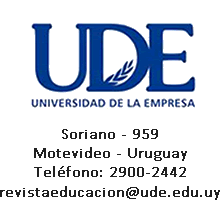Altas Habilidades/Superdotação e Família
RESILIÊNCIA E CRIATIVIDADE
DOI:
https://doi.org/10.48163/rseus.2021.9160-81Keywords:
altas habilidades/superdotação, família, criatividade, resiliência.Abstract
The present work aimed to present reflections on the relationship between creativity and resilience in the gifted family.The investigation was carried out with 15 students who participate in resource rooms of the Specialized Educational Program of the Municipal Teaching Network of Curitiba, Paraná, Brasil and their respective families. The Resilience Scale for Children and Adolescents (ERCA) was applied to students, while fathers and mothers participated on a semi structured interview script. After qualitative analysis of the data and using of the conceptual categories of the Theoretical System of Extended Affectivity (STAA), it was observed that the majority of students presented high resilience, that is, with an accentuated ability to face adversity; indicators of resilience/creativity have been observed in the way parents and family deal with difficulties. Results showed more attributes of resilience/creativity in families with qualitatively positive interactions than in families with qualitatively inconsistent or precarious interactions. Thus, it´s concluded that the quality of interactions experienced and made available in the family environment are essential, affecting the construction of resources to face adversity and to build a healthy identity of a person with High Abilities/Giftedness.
Downloads
Downloads
Additional Files
Published
How to Cite
Issue
Section
License
Copyright (c) 2021 Paula Yamasaki Sakaguti

This work is licensed under a Creative Commons Attribution 4.0 International License.
Política para revistas de acceso abierto
Los autores/as que publiquen en esta revista aceptan las siguientes condiciones:
a. Los autores/as conservan los derechos de autor y ceden a la revista el derecho de la primera publicación, con el trabajo registrado con la licencia de atribución de Creative Commons (CC-BY), que permite a terceros utilizar lo publicado siempre que mencionen la autoría del trabajo y a la primera publicación en esta revista.
b. Los autores/as pueden realizar otros acuerdos contractuales independientes y adicionales para la distribución no exclusiva de la versión del artículo publicado en esta revista (p. ej., incluirlo en un repositorio institucional o publicarlo en un libro) siempre que indiquen claramente que el trabajo se publicó por primera vez en esta revista.






















